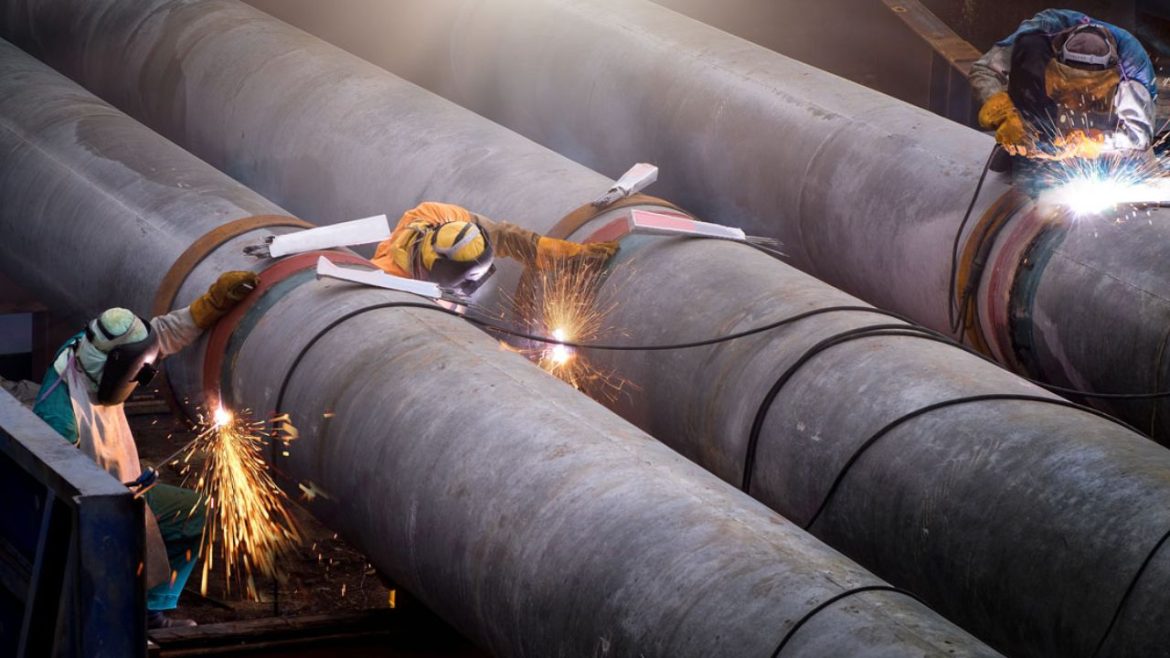The beveling of pipes is a crucial procedure in the industrial and construction industries, especially in welding, construction, pipeline installation, and fabrication applications. It is the act of a pipe beveling the end of a pipe, creating a sloping surface. Although this relatively fundamental change is significant, it facilitates making the connection between joints of pipes durable, strong, and safe, particularly when the pipes require welding.
Pipe Beveling Explained
Beveling a pipe is the process of cutting a pipe at an angle, usually 30 to 37.5 degrees, instead of leaving a pipe with a flat surface at a 90-degree angle. In the case of this angled surface, more penetration can be provided to the welding material, generating a stronger and more thorough weld joint. It is essential in the thick-walled pipes; a straight cut would not enable the welding piece to reach the inner walls in the construction with proficiency. Beveling does not have only a single method. The operation can be carried out using a manual tool and portable beveling machine, or an automatic tool (CNC). This depends on the material size of the pipe and the specific needs of the project. All methods have their respective benefits, depending on the accuracy required, speed, and the amount of work to be done.
Significance of Pipe Beveling in Welding
Another primary usage of pipe beveling is welding. V-groove or U-groove joints are easier to form with the beveled ends of the pipes, and this is necessary for making strong, durable welds. Welding that lacks a good bevel can be porous, discontinuous, and most prone to breaking when exposed to pressure or stress.
The beveling of pipes also enhances quality welding because the weld penetration and filler material can be better controlled. It can assist in limiting some defects of the welds, such as inadequacy of fusion or slag, which are frequent in welding flat-ended pipes without a bevel. Additionally, beveled edges allow welders to align the pipes in the correct position and create uniform joints.
Pipe Beveling Methods
Pipe beveling employs several standard techniques, each with its specific application. Beveling, which is frequently calculated by hand using grinders or torches, is usually utilized on smaller items or where the arrangement is less complex. It is not precise enough for high-stress applications, but it is cost-effective.
Portable machines can be used in mechanical beveling, allowing for greater accuracy and consistency. The bevels are cut on these machines to a prescribed angle and depth using a clamping mechanism that grips the pipe. They can be used on a medium to large scale and are quicker than manual operation.
Automated or CNC (Computer Numerical Control) machines provide a more efficient beveling process when the work has a high volume or requires high precision.
Pipe Beveling Uses
Pipe beveling is applicable in various industries, including oil and gas, shipbuilding, construction, water treatment, and power generation. In such industries, there is a lot of fluid or gas that has to flow through pipes under high pressure, which requires high-integrity joints. Beveling ensures that the welds meet industry standards for strength.
Take the case of power plants as an example: steam and gas lines must have a flawless seal to withstand extremely high temperatures and pressures. The ends of pipes are beveled such that welders can construct joints that can work with a certain reliability in this situation.
The Safety and the Efficiency Advantage
Pipe bevels help to make the workplace and operations much safer, not just regarding the quality of welds and structural strength. Beveled pipes will ensure proper welding by preventing the possibility of weld failure, which may result in leaks, explosions, or environmental degradation. This turns beveling into a necessity that is not a matter of technical preference.
Additionally, the automation of beveling operations reduces time and effort, as it produces uniform products with minimal reworking. This enables project schedules to be completed faster and at a lower cost. When there is proper beveling, it is possible to achieve better productivity in a company without sacrificing quality.
Conclusion
However, the beveling of pipes is an essential part of pipe fabrication and welding procedure, which has a considerable influence on the strength, durability, and safety of welded joints. The use of beveling allows for greater penetration of the weld, easy alignment, and the provision of greater strength to the structure through the creation of an angled surface at the end of the pipe. Different types of beveling tools have been identified, and each has its own demand related to the scale of the project, precision, and efficiency requirements of a given industry.
